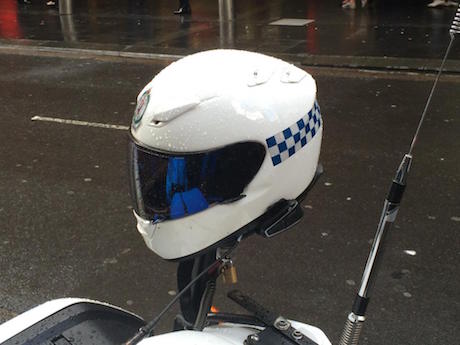Riders in the Hunter Valley region, particularly the Putty Road, have been warned that the NSW Police will target speeding in their latest campaign called Operation Silverstone.
Yes, that’s right, it’s named after the famous British racing circuit and, of course, police have placed an emphasis on speed.
Here is the release from the NSW Police:
Chief Inspector Trent Le-Merton, Northern Region Traffic Tactician for the Traffic & Highway Patrol Command, said Operation Silverstone was about keeping drivers and riders alive on our roads.
“Unlike the legendary Silverstone racing circuit, our roads should not be used as racetracks, as some drivers and riders have, which is costing lives,” Chief Inspector Le-Merton said.
“The operation will involve a range of police resources including both marked and unmarked Highway Patrol cars, police motorcycles and aircraft for aerial surveillance, all focused on detecting those drivers and riders putting themselves, and other road users at great risk.
Traffic & Highway Patrol Officers will maintain a high-visibility presence throughout the operation, which will be combined with other enforcement strategies.
“Police activities will be promoted through social media and directly through vehicle enthusiast websites to heighten public awareness of this road safety strategy.
“Sadly, 29 fatalities have been recorded on Hunter roads in 2015 after a spate of multiple fatalities, which is 13 more than 2014.
There have been 41 motorcycle fatalities this year in NSW including two this month on the Putty Rd, which is a recognised motorcycle riding route. This is four more than this time last year. Last year 63 riders lost their lives across NSW. Motorcyclists made up about 20 percent of last year’s road toll which is alarming given motorcycles only make up about 5 percent of registered vehicles,” he said.
Chief Inspector Le-Merton said it was those riders detected speeding and overtaking unsafely that were presenting a great risk on our roads.
“Many speed-related motorcycle crashes happen in good conditions with no other vehicles involved. There seems to be an over-representation of mature-aged riders on powerful machines who are coming ‘unstuck’ on curves striking road side objects.
“Even experienced riders need time to react to changing situations on the road and as we get older reaction times slow. Driving or riding too fast for the prevailing road conditions, even though you may be below the speed limit can lead to tragic consequences. It takes three-quarters of a second to make a decision to act once you see a hazard, and the same time again for the action to be effective.
“At 60km/h, you will have travelled 25m in that 1.5 second before you even start to brake. Drivers and riders who are tired, distracted or impaired by alcohol or drugs can take longer to react.
“Driving or riding at a speed that reduces the time you have to react to unexpected hazards will increase your risk of a crash. Always be aware of your surroundings and other road users,” Chief Inspector Le-Merton said.



